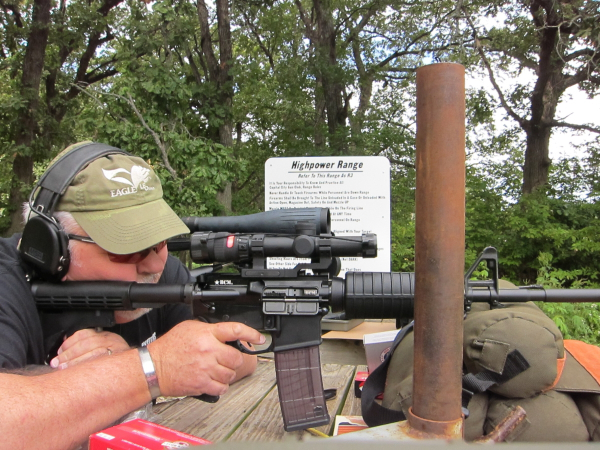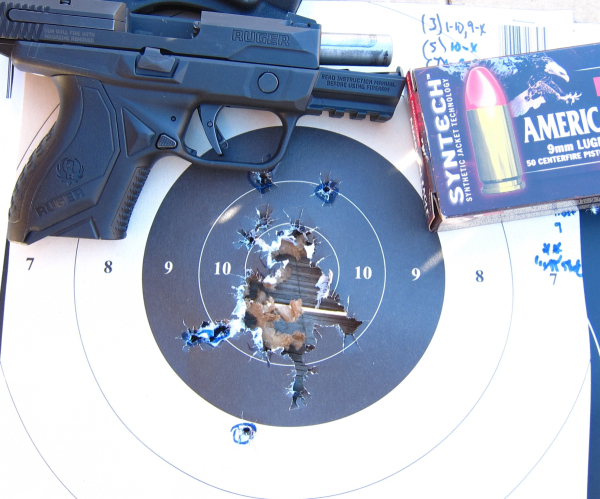Consider the op-ed from Erin Sith in a blog found here (tip of the hat to Chuck Haggard who led me to it) regarding the arming-up of the political left. If, like me, you figured that (1) duffers use crap for gear, (2) have no apparent training and that means (3) they have no skills, perhaps you should get a look at this story. The photos of the “antifa” (sic) types featured in the piece display gear such as a BCM carbine, GLOCK pistols, Magpul magazines and plate carriers properly worn -- in addition to support gear that definitely screams “professional,” like hydration and individual first aid kits.

One way to determine relative potential skill level of a stranger is to notice the gear -- like the top-of-the-pile BCM brand AR seen here. It appears some of the so-called anti-fascists are showing up with rifles like this and with gear placement and type demonstrating some serious skills.
It seems that people “on the right” have no corner on the operational skills and gear components, something to be considered when things go off the rails. Remember, even gun control fanatics aren’t “anti-gun” – they’re against you having guns.
There’s a difference. Now there’s even a “socialist rifle association” and those who believe that a reason Soviet communism failed was that the people didn’t have arms to fight the (inevitable in statist society) corruption of the government.
So it’s an “arms race,” that includes knowledge and skills gained from training.
Have you trained – recently? Or at all?
And while we’re about training, you should all be familiar with the Tactical Professor, Claude Werner. One of the clearest thinking and often contrarian (to ‘official’ dogma) analysts in our industry, he’s not been resting on his laurels. He recently complete Version 2.0 of his Advanced Pistol Practice.
A “guide for practicing with handguns for personal protection,” it moves us beyond the Rehn/Daub text Strategies and Standards for Defensive Handgun Training and into the practice aspect of the trade. Training is good – very good – and continuing education with texts and videos are also part of the puzzle.
Without practice – more importantly knowing how to practice and what to practice – the training and education are of less import. The way in which he approaches this issue is through the components of “advanced tasks.” These include consistency, performance measurement and context.
Consistency is the element that considers what you can do – right now, on demand. Not after “warm-up,” not on a “good day,” but right now, this minute.

Claude's "Baseline Evaluation" was used to check three small handguns against each other. I elected to shoot the course on the B-8 bullseye as recommended by Greg Ellefritz. This Ruger American Pistol Compact was the winner that day.
Measurement is the only way to gauge progress when the object is to sharpen performance. Many of us have an inflated view of our skills, while others bemoan the likelihood we’ll never be “good enough.” The intervening chasm is filled with those who realize they’re not as good as they could be and who are working to fill that void.
Context is the environment in which the skills are to be used operationally. Just what is it you’re practicing? What skill will solve that problem? One of the many places Claude shines is in problem analysis: what is the mission?
It’s not always the same for those involved in preparation for personal protection: some may be on-duty law enforcement officers, those having a responsibility that non-sworn citizens do not have. The missions are similar and different.
Claude includes his analysis of ‘serious mistakes and negative outcomes,’ critical issues to be considered in advance of need. This part of the book is worth the price of the whole book – and is something to be regularly considered and discussed with the like-minded.
The book includes the following: live fire drills, live fire decision drills, live fire scenarios and a complete plan for dry practice. Not enough? He includes a piece on skill development with small revolvers – very practical and also worth the cost of the book --, a syllabus of his “short class for those new to concealed carry” as well as comprehensive shooting tips and printable targets.
Buying it is good; making use of its contents through dedicated practice is better.
- - Rich Grassi